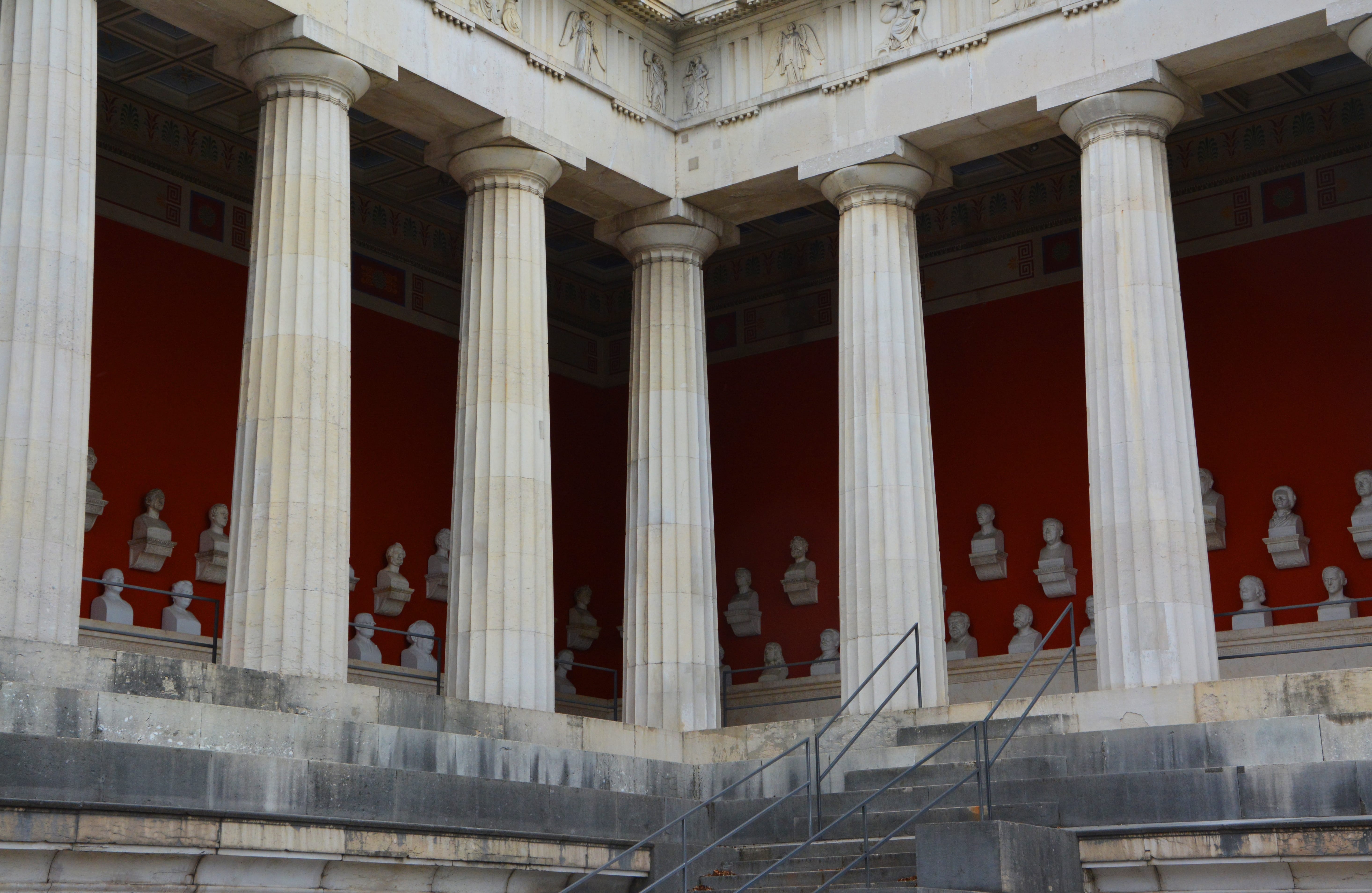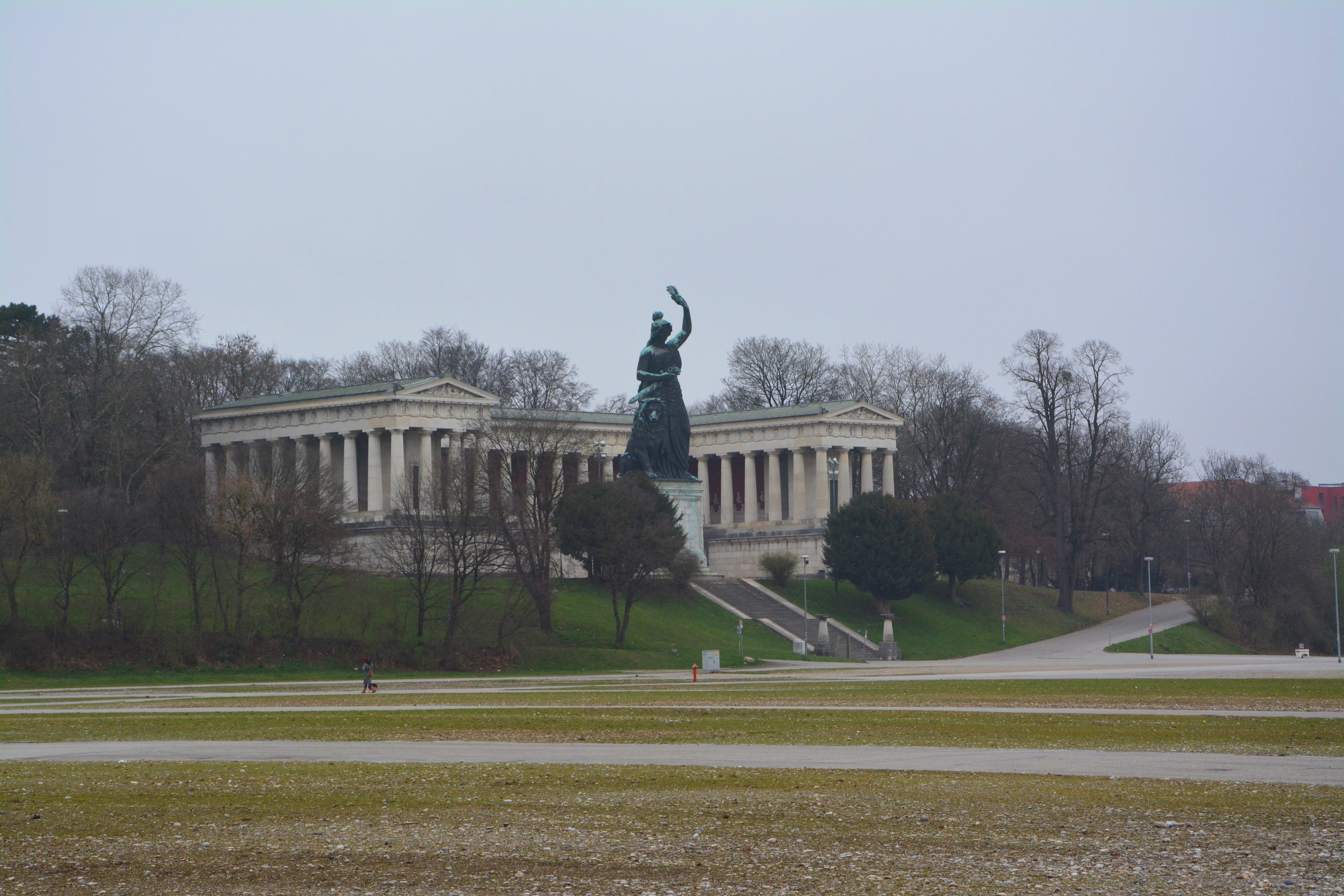Victory
A white blanket hung over the Theresienwiese, submerging the grey square in a desolate, almost Victorian atmosphere. Home to the Oktoberfest, Winter Tollwood and other festivals, the square was now completely empty and offered Erica a wide view. She had hoped for better weather, a temperature more appropriate for the occasion. “As if ‘that’ would stop me”, she grinned. Erica sauntered to the central part of the area and observed her surroundings. It surprised her how many people wandered over the square, despite the raw February cold. To her right, two dogs enthusiastically greeted each other, their tails wagging wildly. The owners plodded behind them, hands deep inside their pockets, covering for the cold wind. Some cyclists crossed the field, choosing the short cut instead of the long trip around and in the distance, a dog dashed away from his master in chase of a group of pigeons. Two large crows watched the spectacle from afar as the pigeons took to the air in fright.
Bavaria, the female personification of the Bavarian country, the Bavarian culture and the Bavarian spirit

A shiver ran down Erica’s spine as she gazed at the reason of her visit. The white sky stretched out far and wide, making the imposing statue dark and ominous as it towered above her. Bavaria, the female personification of the Bavarian state, the Bavarian culture and the Bavarian spirit. A huge statue of in total about 27 meters, holding an outstretched hand over Munich.
Erica squeezed the top of the bottle in her purse. “No better place to celebrate”, she thought and walked up the stairs towards the statue. A large lion at the foot of the structure looked somewhat uninterested at the South of the square. In her outstretched hand, Bavaria held a crown of oak leaves and clasped the hilt of her sword in the other. Soft rain whirled down on her bearskin covered back while three crows circled playfully above the head of the colossus.

Erica set foot on the last step and at once felt a load fall off her shoulders. A knot, tightly wound around her heart, now untangled. She made it. Under the approving looks of Bavaria, she walked around the statue. There, in the Ruhmeshalle, hung the busts of the most important people in the history of Bavaria. The people who had made Bavaria great. Central was the bust of Ludwig I, the patron of the statue and halls. Two tourists followed her around the statue and groaned when they saw the closed gate. Erica didn’t care. She came here for the symbolism. Two hundred years ago the king wanted a representation of the strength and resilience of Bavaria. A cooperation between a classicist architect and an artist with Romantic influences brought an amazing result. A leaf wreath as an award for the people in the Ruhmeshalle and Bavaria. Oak leaves and a bearskin as a token of the Germanic heritage. A sword, ready in the hand, symbolizing the willingness to fight and overcome a struggle. And a lion, not only the heraldic symbol of Bavaria but also showing the strength of its people.
To Bavaria
Most important of all, the statue was female. To Erica, it represented the strength of a woman, her own strength. She recalled the many nights she sat in the small room of her sister’s apartment. The files of her divorce on one side, her clothes for her day job neatly folded on the other, and… on her laptop the beginning of her own company. She sat down on the steps in front of the statue and reread the email she received this morning.
Dear miss Langer,
After our very pleasant call, we hereby confirm our resolve of working with you and will gladly hire you as our consultant for the following three years. We will discuss everything in detail in our meeting next Monday.
She could barely contain herself from cheering again. To scream ‘you see?’ to everyone who doubted her. Instead, she opened the bottle of wine and lifted her glass towards the grand lady towering above her. “To us.”